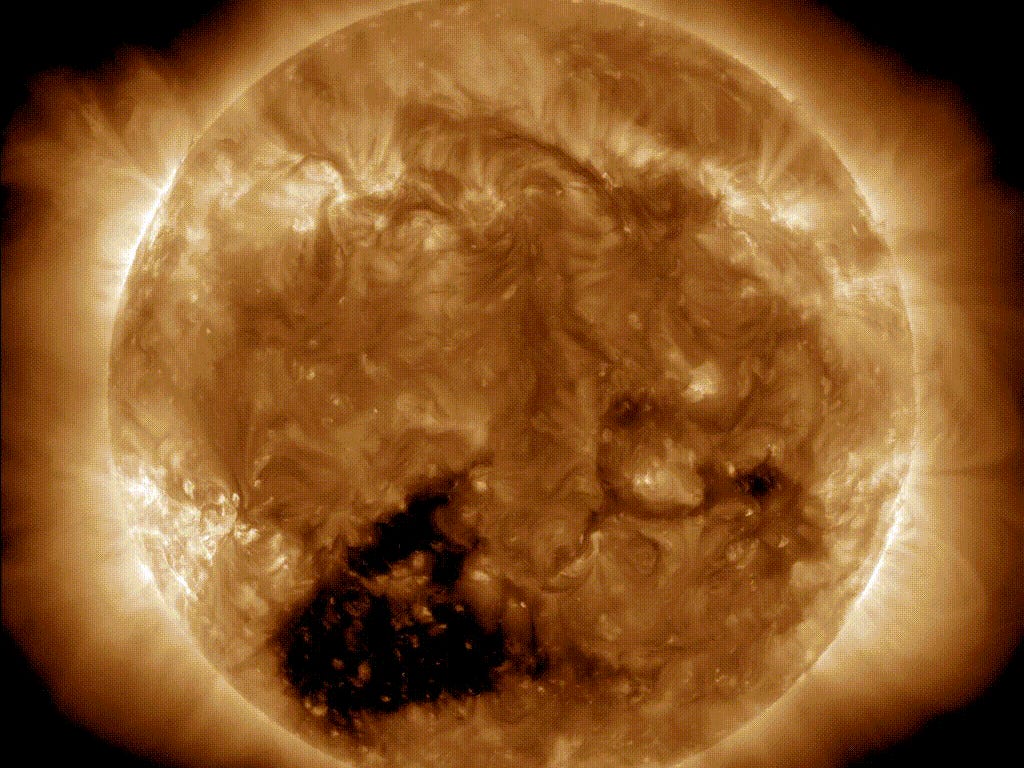
Massive black region
NASA scientists have discovered a massive black region on the Sun that is 20 times the size of Earth. The appearance of the ‘coronal hole’ has prompted the National Oceanic and Atmospheric Administration (NOAA) of the United States to issue a geomagnetic storm warning, as the gaping hole is unleashing 1.8 million mile-per-hour solar winds toward Earth, which will impact the planet on Friday.
Scientists are keeping a close eye on the situation to see if the winds will affect the Earth’s magnetic field, satellites, or technology. This was the second hole that had appeared in less than a week.
Nasa’s Solar Dynamics Observatory, which studies the Sun, captured both holes. On March 23, a new hole was discovered near the Sun’s South Pole. The hole is actually a large region of the Sun that is much cooler than the rest of it, giving it a black appearance.
NASA explains, “Coronal holes are magnetically open areas that are one are one source of high-speed solar wind. They appear dark when viewed in many wavelengths of extreme ultraviolet light. At times, the solar wind can generate aurora at higher latitudes on Earth”.
A five-level NOAA space weather scale is used to classify geomagnetic storms. Larger and more expansive coronal holes are frequently the source of high solar wind speeds that can batter Earth for days.
Forecasters closely monitor coronal holes because of their potential for increased geomagnetic activity and storming (G1 or higher).
Coronal holes are most common and stable at the solar north and south poles, but they can develop and spread to lower solar latitudes, according to Nasa. Coronal holes can also form independently of polar holes, or an extension of a polar hole can break off and become an isolated structure. Long-lasting coronal gaps are sources of high-speed solar wind streams.
Also read: Heavy Rain & Thunderstorm Hit Delhi For Second Consecutive Day
To read more such news, download Bharat Express news apps






















